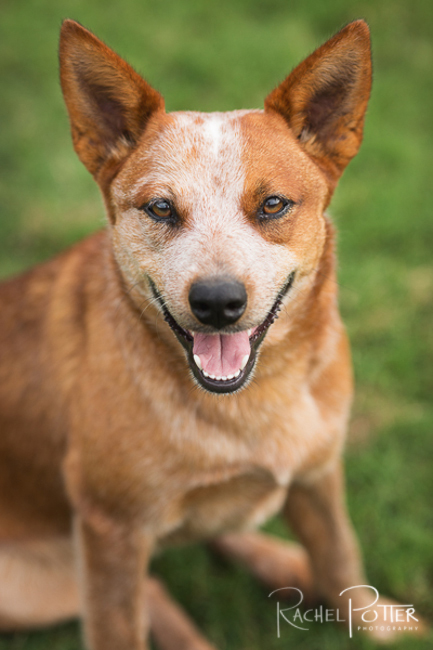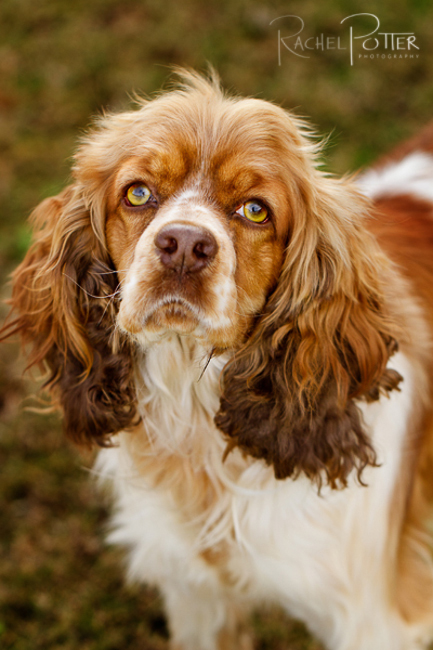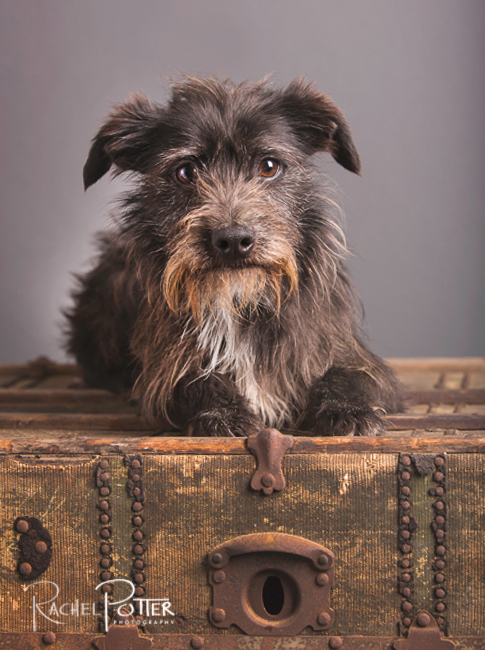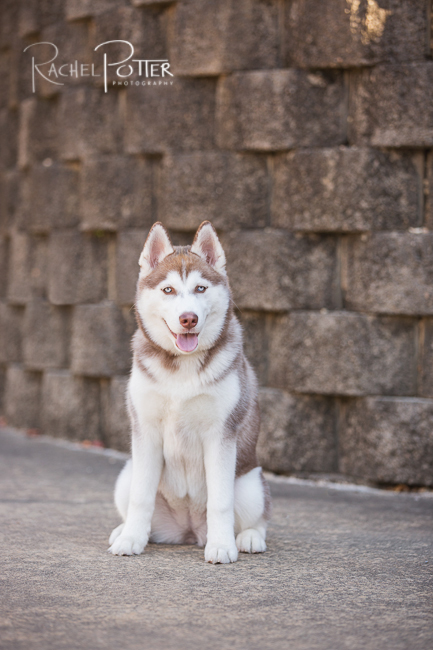This post contains affiliate links.
What is the correct DOF for pet photography?
Should eyes and nose BOTH be in focus?
And how do I do that?
DOF (depth of focus) like so many things in photography, I think is a matter of artistic preference in some situations. Some of my favorite detail shots are of a cute black nose in focus with the rest of the face lost to a shallow depth of field. However, for a standard portrait, I think it looks best to have both the eyes and the tip of the nose in focus. The eyes of course are the MOST important. Since most pets are limited in the expressions they can portray it is so important to capture their soul through their eyes. And I think it’s even more important than with humans to capture good light in the eyes especially with dark eyed dogs.
So how do you achieve this?
A lot depends how you like to shoot (short or long lenses). Keep in mind the situation, temperament and behavior of the dog may also dictate what works best.
For Example: If you are shooting shy dog (rescue) or a well behaved dog that obeys commands and sits and stays, or have a handler then my preferred way is to shoot with a long lens. I’ve always preferred this method. With these lenses you can shoot at an aperture of f/2.8 or f/3.2 and maintain a deep enough DOF to get both the eyes and nose in focus, but it also allows for beautiful bokeh to help separate the subject from the background. This is because you are further away from your subject and you DOF will be larger in proportion to that same aperture on a shorter lens.
Read more: Make Your Blurry Photos Tack Sharp with 6 Simple Tips
Some suggestions for this type of lens on various budgets:
100 2.8L Macro
135 2.0L
70-200 IS 2.8 II
As I said before, long lenses work well with shy dogs and well behaved dogs that have a good attention span. I have found that they don’t always work well with dogs who are easily distracted and need constant reinforcement to “stay” with you. I also use this lens for close up head shots because the minimal focusing distance on the 70-200 won’t allow me to get super close to my subject. The exception to this would be the 100L Macro (yet another reason to LOVE this lens). When shooting with the shorter lenses you will need to have your aperture set to f/4.0 and above to get the long faced dogs with total facial focus. Short snouted dogs will do well with an aperture of f/3.5 or so.
Some suggestions for this type of lens are:
Sigma 30mm 1.4
35L 1.4
50 1.4
50L 1.2
24-70 2.8 II
To note: I am also adding a lens which I have not shot with the 24-70II as I have read excellent reviews of this lens and will probably be renting it soon!
Recap Pet Photography Lenses and DOF
The longer the lens, the further away you are from your subject; the deeper you DOF will be even at a lower aperture (2.8- 3.2)
The shorter you lens, the closer you are to your subjects, the DOF will be thinner and therefor require a higher aperture (3.5- >4.0)
So with my favorite lens, the 70-200, I shoot mostly at f/3.2, with my shorter lens, I shoot at f/4 or higher. I always shoot a few test shots, and gauge my focal plane.
The goal: to get tack sharp focus on the eyes, good focus on the nose and dreamy bokeh in the background.
Are you interested in pet photography? Rachel will be sharing more tips with you in the weeks and months to come.
Read more in the pet photography series
Pet Photography: Settings
Pet Photography: Focus and Lenses
Pet Photography: How to Photograph a Black Dog
Pet Photography: Getting THE Shot











YES! I just started doing pets and I am SO excited to see this mini series!
Thanks! I had so much fun writing it!
Thank you; I found the information on lens selection to be most helpful! Beautiful images, too!
So glad to hear you enjoyed it!! Stay tuned for more from Rachel :)
Great timing on this as we are picking up our first puppy at the end of Feb.!! Quick question, a friend of mine just got an all black dog and is having trouble getting decent pictures of her that show detail and not just “a black blob in the shape of a dog” (her words). Any advise?
Oh! Your first puppy!! Eek!! Have fun!! Black dogs can be a challenge but stay tuned ;) That is next :)
Yay! When the post goes live I will send it to her :)
Love this series! These tips were so helpful… I just did a couple of dog shoots and this information helped to explain a few of the challenges I discovered. Can’t wait for more… thanks!
So glad you are enjoying it!
I have just purchased a Canon T4i. I am new to photography but I want to concentrate on pet photography. The lens that came with the camera is the EF-S 18-135 IS STM. No funds right now for any other lenses. Will this lens get me started with getting the hang for taking pet photos? What would be your suggestion for an additional lens once I can afford to purchase one? Thanks
You can definitely learn to rock any lens you have but lenses do make a difference. All the lenses Rachel mentions are great so I think maybe the budget is more of a deciding factor. I know that is often my case :)
Love your series, so glad I found it. I am using a Nikon D3100 which is a dx format. I have aquired a 55 – 200mm lens. Will I get decent photos with this lens or should I stick to my 40mm Micro lens.
Glad you are enjoying it! I’m not familiar with that lens but if it gives you the look you want then go for it :)
It is so good you talked about f-stop and lens size. You never mentioned anything about speed. There is a difference between shooting with a 50mm and a 200 mm. Handheld at 1/60 with 200mm would not work.
Love this site and posts, learning a lot, but I’m also learning that every lens you recommend is WAY out of my budget. I’m not poor but seriously I can’t afford a $1,000+ lens to take pics of my pets and kids. Unless you’re making money off of your photography then this just isn’t feesible. I have a 35mm 1.8g lens and that’s it. Wouldn’t I be able to use that for these shots? I just really wish you would broaden your scope of lenses. I’m starting to feel like I’m never going to achieve great photos without these expensive lenses which us really disheartening. Or are you only recommending expensive lenses because you are an Amazon affiliate? I just don’t get it. Please please start including lenses for us “poor” folks meaning $500 or less.
Hey Mary,
I only recommend lenses that I own or have owned. You can see a full list of my gear here – http://clickitupanotch.com/2014/05/peek-inside-a-photographers-camera-bag/ I understand these lenses are not in everyone’s budget and when I started I only have the 50mm 1.8 for over a year before I could add another lens. That being said, you can take awesome pictures with your 35mm 1.8 but just know they won’t look the same as ones taken in this post with the lenses mentioned. Lenses have a big impact on the image. I have not nor would I ever recommend something based on price I didn’t believe in especially something more expensive just because I’m an Amazon Affiliate. We did a whole series on lenses if you would like to check it out – http://clickitupanotch.com/2013/09/camera-lenses-series-everything-you-need-to-know/
Why did you post example photos with a soft nose when explaining how to keep the eyes and nose both in focus?